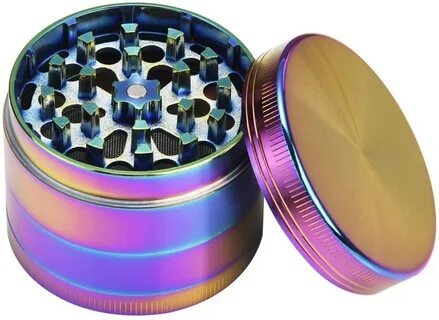When it comes to creating a comfortable living space, the humidity level in your house plays a key role in your overall comfort and well-being. If the air is too dry or too humid, it can affect your health, damage your home’s structure, and increase energy costs. So, how do you get the right balance? In this blog, we’ll walk you through the perfect humidity levels for your home, how to measure them, and how to adjust the humidity with the help of humidifiers and dehumidifiers to keep your indoor air quality in check.
What is Humidity and Why Is It Important?
Humidity refers to the amount of moisture in the air, and Relative Humidity (RH) expresses how much water vapor the air contains compared to how much it can hold at a given temperature. For example, 50% RH means the air is holding half the moisture it could at that temperature.
Quick Fact: Since warmer air can hold more moisture than cooler air, RH levels can change depending on the temperature.
What Is the Right Humidity Level for Your Home?
To maintain a healthy and comfortable indoor environment, the ideal humidity level for most homes is between 30% and 50% RH. Here’s why this range is crucial:
-
Too Low (Below 30% RH): Dry air can lead to irritated skin, dry eyes, sore throats, nosebleeds, and static electricity. Wooden furniture and floors may also crack or warp over time.
-
Too High (Above 50% RH): Excess moisture in the air promotes mold, mildew, dust mites, and musty odors. It can also cause damage to your home’s walls, ceilings, and floors.
By maintaining the right humidity level, you can ensure a more comfortable, healthy living space and protect your property from moisture-related damage.
Why Humidity Levels Matter for Your Home
The humidity level in your home impacts more than just comfort. Here’s why getting it right is essential:
-
Health:
Both excessive dryness and high humidity can aggravate allergies, asthma, and other respiratory issues. Dry air can dry out your nose and throat, while too much moisture promotes the growth of mold and dust mites. -
Comfort:
If the air is too dry, your home can feel colder than it actually is, making you crank up the heat. On the other hand, high humidity can make the air feel sticky, especially during warmer months. -
Home Protection:
High humidity can damage wooden furniture, floors, and paint, while dry air can cause cracking and warping. Proper humidity helps preserve the condition of your home and its contents. -
Energy Efficiency:
If your home feels damp, you may turn up the air conditioning, or if it’s too dry, you may raise the heat. By keeping humidity levels balanced, you can help your HVAC system run more efficiently and save on energy costs.
How to Measure Humidity in Your Home
To check your home’s humidity level, you’ll need a hygrometer, which measures relative humidity. Some modern thermostats also have built-in humidity sensors.
Be sure to check rooms that tend to have higher humidity, such as bathrooms, kitchens, and basements. If you notice signs like dry skin, condensation on windows, or musty smells, it may be time to check and adjust your humidity.
How to Adjust Your Home’s Humidity
When the Air is Too Dry – Use a Humidifier
If the air in your home is too dry, a humidifier can help add moisture back into the air, especially during the winter months when heating systems tend to dry out indoor air.
-
Types of Humidifiers:
-
Portable Humidifiers: These are perfect for individual rooms like bedrooms or living rooms.
-
Whole-House Humidifiers: These connect to your HVAC system and help control humidity throughout the entire home.
-
-
Benefits of Humidifiers:
-
Relieves dry skin, sore throats, and sinus issues.
-
Prevents wood furniture and floors from cracking.
-
Reduces static electricity.
-
When the Air is Too Damp – Use a Dehumidifier
On the flip side, if your home’s air is too humid, a dehumidifier will help remove excess moisture from the air, making it more comfortable and preventing moisture-related problems like mold.
-
Types of Dehumidifiers:
-
Portable Dehumidifiers: These are compact and ideal for use in specific rooms.
-
Whole-House Dehumidifiers: These connect to your HVAC system to manage humidity levels throughout the entire house.
-
-
Benefits of Dehumidifiers:
-
Prevents mold, mildew, and dust mites.
-
Keeps your home smelling fresh and feeling cooler.
-
Improves overall air quality.
-
Seasonal Humidity Tips
-
In Winter:
During colder months, indoor air tends to get very dry. Use a humidifier to keep humidity levels around 30% to 40%. Be cautious not to over-humidify, as this can cause condensation on windows and walls. -
In Summer:
In warmer weather, humidity can often rise above 60%, which is too high. Use dehumidifiers and air conditioning to bring the humidity levels back down to 40%–50%.
How to Know If Your Humidity Levels Are Off
If your home’s humidity level isn’t right, you’ll likely notice certain signs. Here’s what to watch for:
Signs of Low Humidity (Too Dry):
-
Dry, itchy skin
-
Sore throat or nosebleeds
-
Static shocks
-
Cracked wooden furniture or floors
Signs of High Humidity (Too Damp):
-
Musty odors or mold
-
Condensation or foggy windows
-
Sticky, clammy air
-
Water stains on walls or ceilings
-
Increased allergy symptoms
If you notice any of these issues, it’s a good indication that your home’s humidity levels need adjusting.
Additional Tips for Managing Humidity
-
Ventilate Bathrooms and Kitchens:
Use exhaust fans or open windows while cooking or showering to help release moisture and reduce excess humidity. -
Fix Leaks:
Check your home for leaks in pipes, roofs, or walls that could allow moisture to enter your living spaces. -
Seal Your Home:
Properly seal your windows and doors to prevent outdoor humidity from affecting your indoor environment. -
Be Mindful of Plants:
Some plants release moisture into the air, so if your home is already humid, be careful not to overwater them.
When to Call a Professional
If you’re struggling to maintain the right humidity level in your home, it might be time to call in a professional. An HVAC technician can assess your home’s humidity levels and recommend the best humidifiers or dehumidifiers for your needs.
Conclusion
Maintaining the right humidity level in your house (between 30% and 50% RH) is essential for your comfort, health, and the protection of your home. By using a hygrometer to measure your humidity and using humidifiers or dehumidifiers when needed, you can ensure a healthier, more comfortable indoor environment.
Need assistance managing your home’s humidity? Contact Gleason Heating and Air Conditioning for expert advice and solutions to improve your indoor air quality today!



